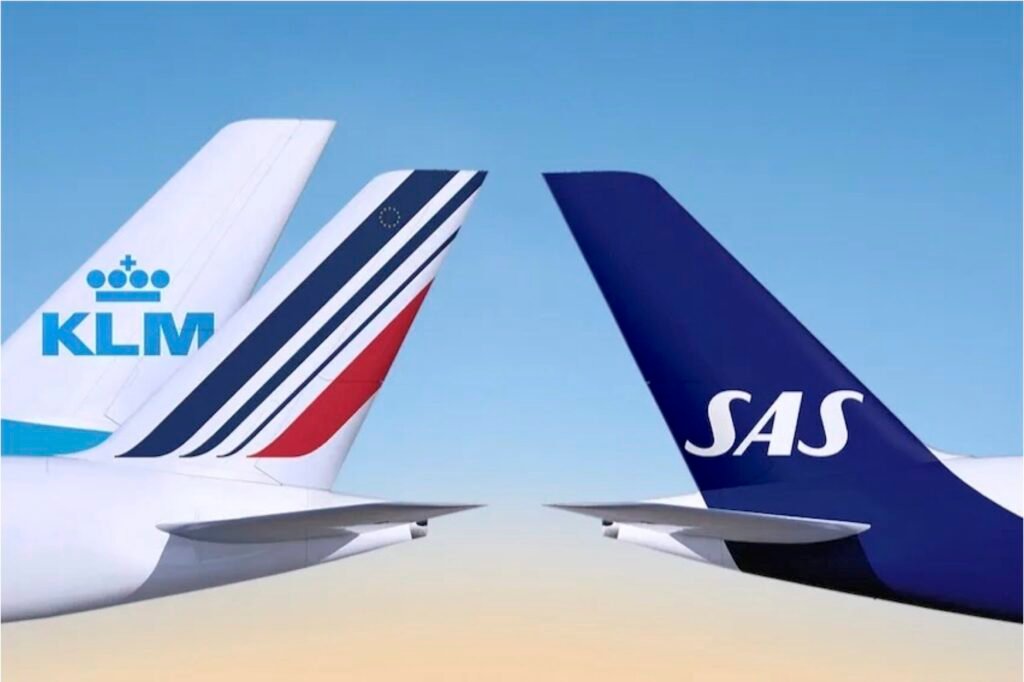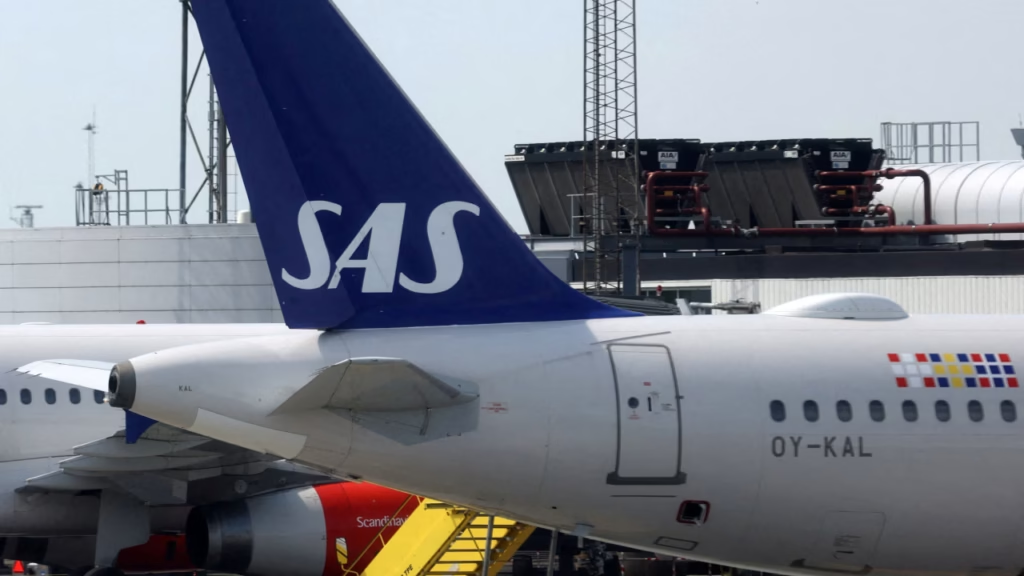Air France-KLM is increasing its stake in Scandinavian Airlines (SAS) to 60.5%. This strategic development marks a significant shift in European aviation alliances and competition. But what does it mean for travelers, employees, investors, and the overall airline market?
Let’s break down the story, the reasons behind the acquisition, what’s likely to change, and what this means for the future of European air travel.
Air France-KLM’s Move
The Air France-KLM Group has announced that it will increase its stake in SAS to 60.5%, marking a major shift in airline ownership in Northern Europe. This move follows SAS’s exit from the Star Alliance and its financial restructuring process under Chapter 11 bankruptcy protection in the U.S.
With this investment, Air France-KLM strengthens its position in Europe, particularly in the Nordic region, which has long been dominated by SAS and its previous Star Alliance partners.
Why This Deal Is Big News
This development is more than just a change in ownership. It’s a strategic realignment with ripple effects across the aviation world.
SAS will join the SkyTeam Alliance, which includes Delta, KLM, and Air France. The Star Alliance loses a key member, affecting passengers and codeshare partners. Air France-KLM gets access to the Scandinavian market, which includes three high-income nations: Sweden, Norway, and Denmark.
Air France-KLM’s move is part of a bigger strategy to expand influence and consolidate routes after years of tough competition and pandemic-driven losses.
SAS: A Quick Look at the Scandinavian Flag Carrier

Scandinavian Airlines, or SAS, is the flag carrier of Sweden, Norway, and Denmark. It has been a prominent name in European aviation for decades and was one of the founding members of the Star Alliance, alongside Lufthansa and United Airlines.
However, in recent years, SAS has faced major financial hurdles:
- COVID-19 led to huge losses due to grounded flights.
- Rising fuel costs and inflation worsened the situation.
- A pilot strike in 2022 caused major disruptions.
- SAS filed for Chapter 11 bankruptcy protection in 2022.
Despite these issues, SAS has always held strong brand recognition and loyalty in the Nordic countries. That’s what makes it such a valuable catch for Air France-KLM.
The Numbers: Stake Breakdown and Structure
Here’s how the ownership will look after the deal:
- Air France-KLM: 60.5%
- Castlelake (U.S. investment firm): 32.0%
- Danish Government: 6.0%
- Lind Invest (private Danish firm): 1.5%
The Air France-KLM stake in SAS not only gives them control but also allows them to reshape SAS’s business model, route strategy, and alliance positioning.
Total Capital Injection
The investors, including Air France-KLM and Castlelake, will inject $1.2 billion into SAS as part of the restructuring.
This includes:
- $475 million in new equity
- $700 million in convertible debt
This financial boost is meant to stabilize the airline and help it emerge stronger post-bankruptcy.
The Role of Castlelake and Danish Government
While Air France-KLM will hold the majority stake, Castlelake plays a critical financial role. This private investment firm specializes in distressed assets and aviation leasing, giving SAS a financial partner with deep industry insight.
The Danish Government, though reducing its stake, remains a part-owner. This ensures some national oversight and strategic interests remain protected, especially for routes important to Danish citizens and businesses.
Impacts on Star Alliance and SkyTeam
This move shakes up global airline alliances.
SAS Leaves Star Alliance
SAS will officially exit Star Alliance in September 2025. This affects passengers who used to rely on codeshares and loyalty benefits with:
- Lufthansa
- United Airlines
- Singapore Airlines
- Air Canada
SAS Joins SkyTeam
Instead, SAS will join SkyTeam, the alliance that includes:
- Air France
- KLM
- Delta Air Lines
- Korean Air
This means:
- Frequent flyer program changes for EuroBonus members
- New code-sharing opportunities
- Better connectivity with SkyTeam routes, especially across the Atlantic
This realignment of alliances could prompt further changes among competitors in Europe and beyond.
What This Means for Travelers
For passengers, the deal could bring both benefits and disruptions.
Pros
- Better connectivity between Scandinavia and France/Netherlands
- Easier access to North America via Delta’s SkyTeam network
- Improved schedules and code-shared flights
Cons
- Loss of Star Alliance benefits for frequent SAS flyers
- Potential pricing changes due to market consolidation
- Route reshuffling as Air France-KLM optimizes SAS operations
Frequent flyers will need to adjust loyalty strategies, especially if they were previously accumulating Star Alliance miles.
European Airline Market: A New Chapter
Europe’s aviation landscape is constantly evolving, and this move is part of a larger trend of consolidation. Here’s how this acquisition changes the game:
- Air France-KLM becomes stronger in Northern Europe
- Lufthansa Group (Star Alliance) faces new competition on Scandinavian routes
- Smaller regional carriers may feel more pressure to consolidate or partner
We might see increased competition on certain routes but also greater pricing power for the major alliances.
Challenges Ahead for the New SAS

While this deal is promising, several challenges remain.
Regulatory Approvals
The deal must pass scrutiny from European competition regulators. It’s expected to be finalized by Q4 2025.
Cultural Integration
Merging corporate cultures of SAS and Air France-KLM may not be smooth. Employee unions and legacy systems could slow progress.
Operational Overlap
Some routes between Scandinavia and Paris/Amsterdam may overlap. Rationalization could mean cutting certain flights or merging operations, which could lead to job cuts.
Loyalty Program Transition
EuroBonus members will undergo a transition period, and ensuring customer satisfaction during this phase will be critical.
Conclusion: A Bold Bet by Air France-KLM
The decision to increase the Air France-KLM stake in SAS to 60.5% is not just an investment — it’s a bold bet on the future of European aviation. By bringing SAS into its network, Air France-KLM is making a strategic move to dominate more of Northern Europe, expand its alliance network, and create a more resilient post-pandemic airline group.
Travelers, competitors, and regulators will be watching closely to see how this deal reshapes the skies over Europe.
Read Next – French Air-Traffic Controller Strike Grounds Thousands of Airline Passengers





